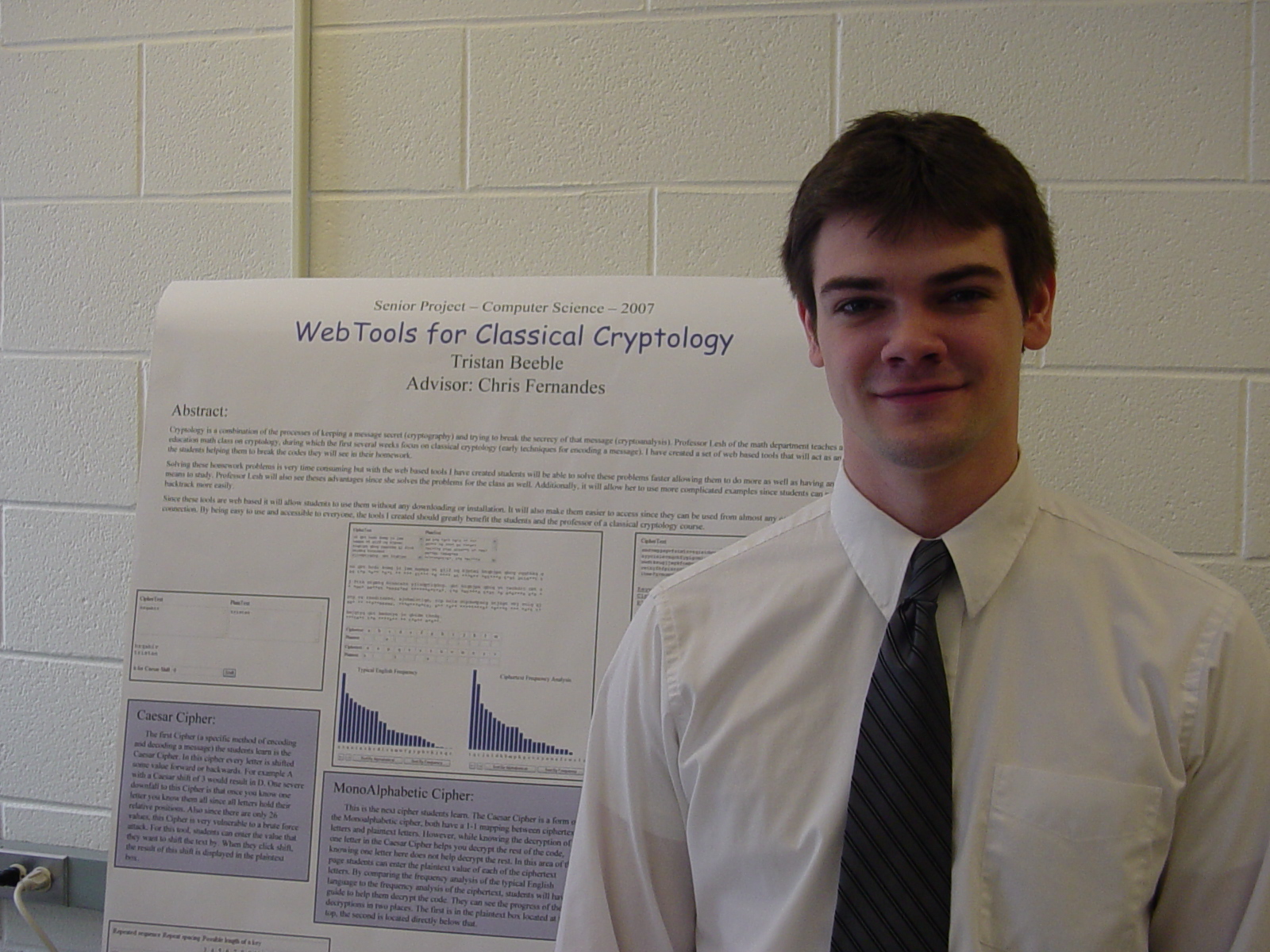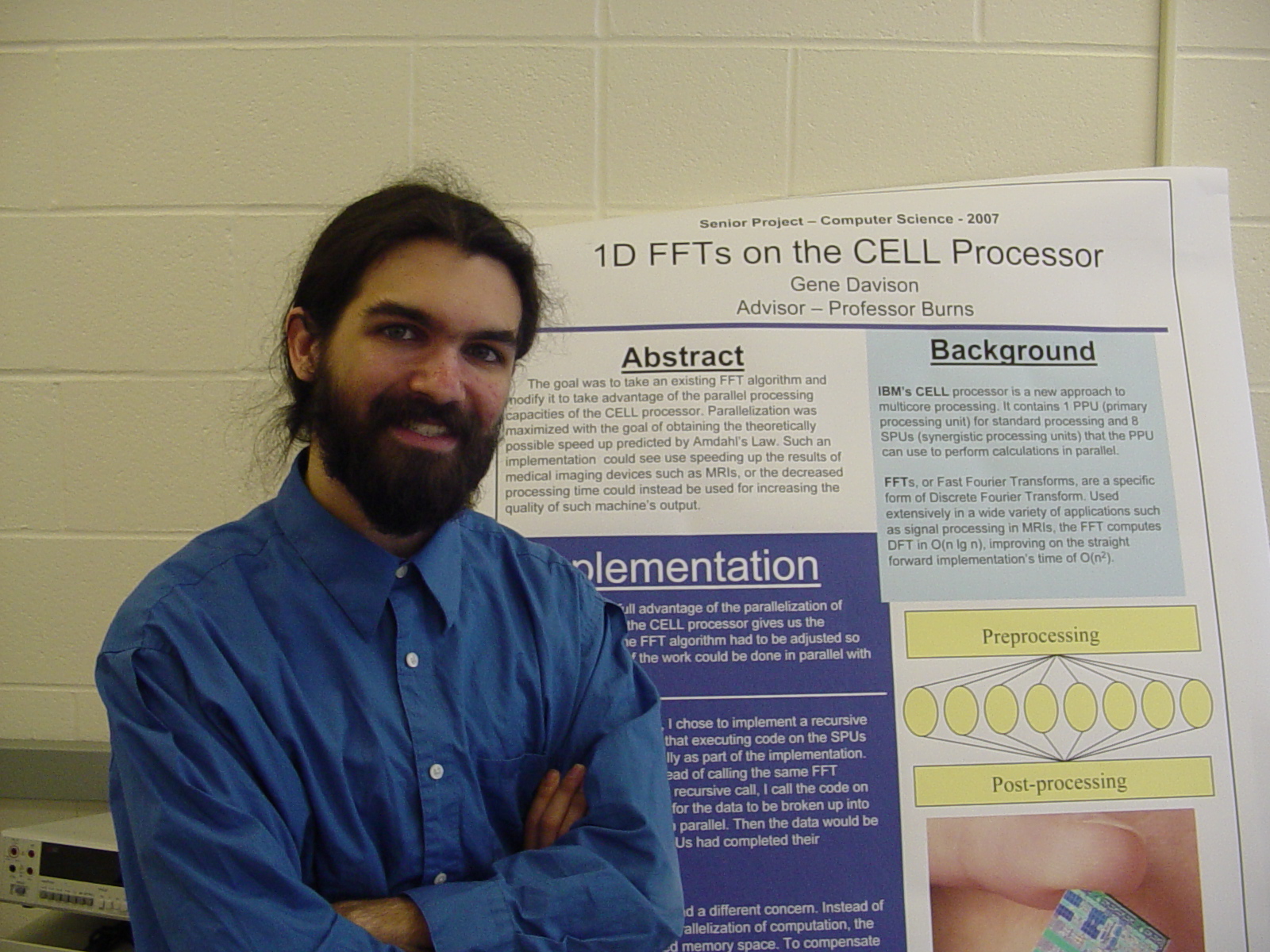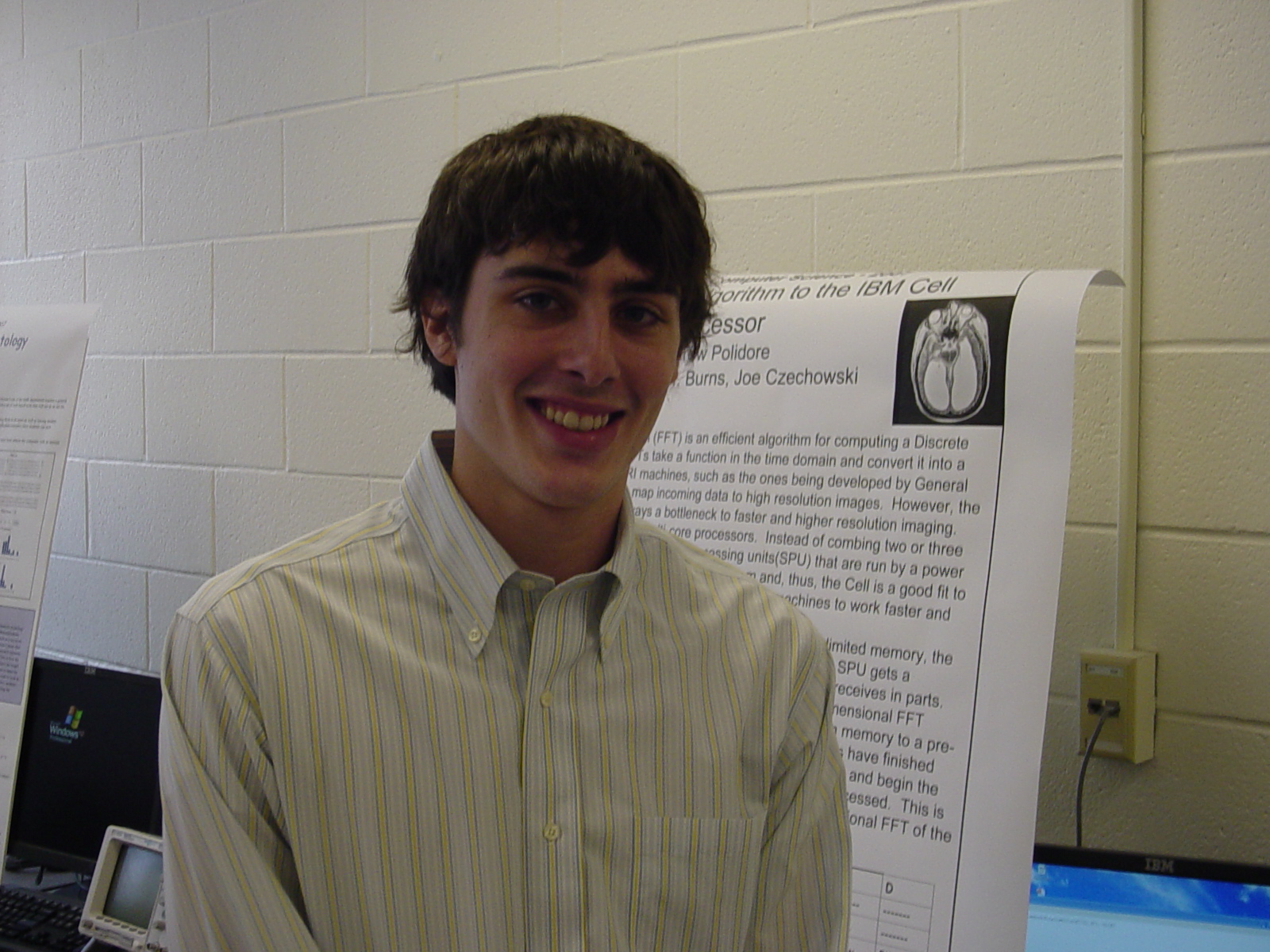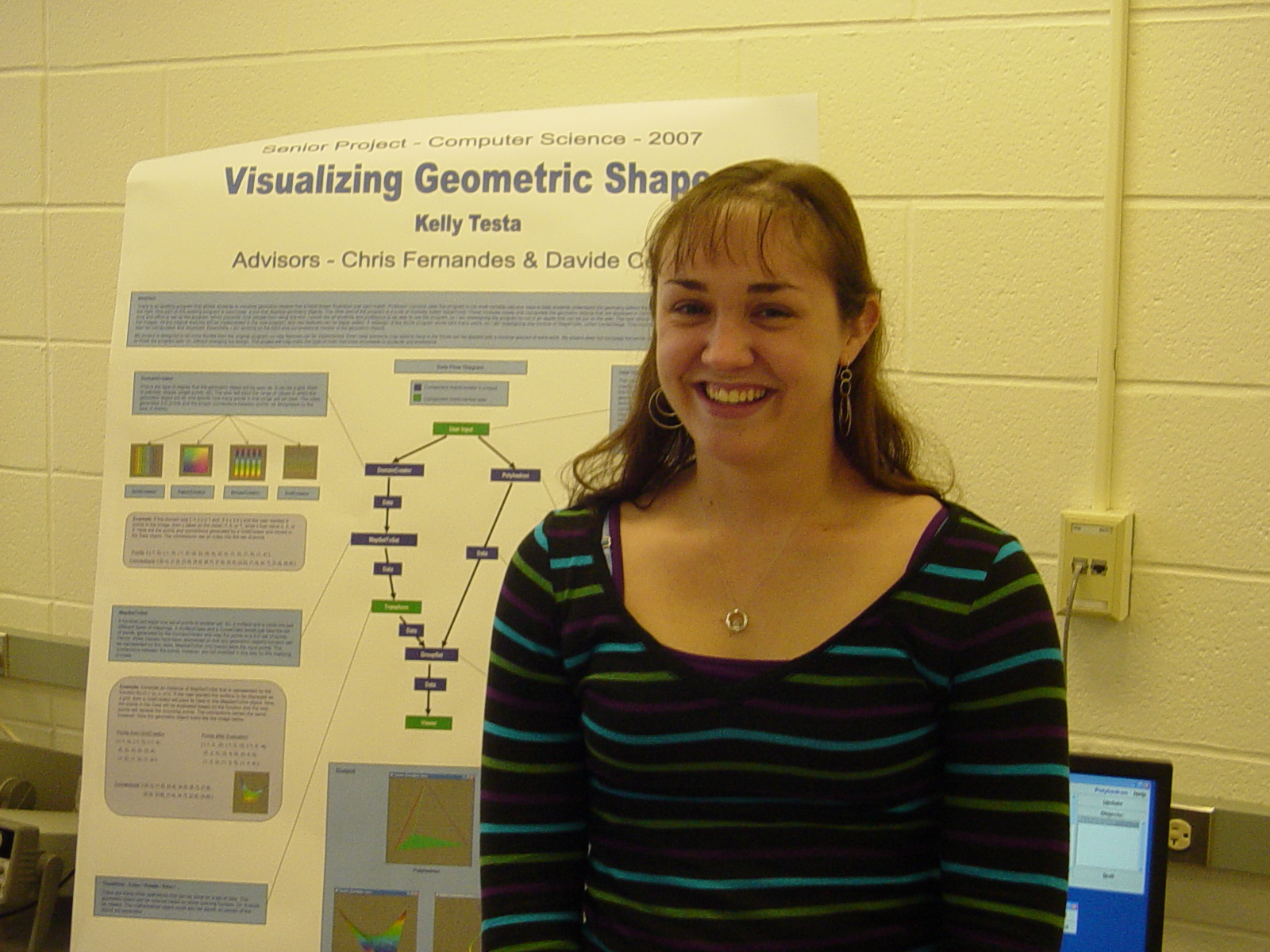
Tristan BeebleAdvisor: Prof. FernandesWeb Tools for Classical Cryptology
Cryptology is a combination of the processes of keeping a message secret (cryptography) and trying to break the secrecy of that message (cryptoanalysis). Professor Lesh of the math department teaches a general education math class on cryptology, during which the first several weeks focus on classical cryptology (early techniques for encoding a message). I have created a set of web-based tools that will act as an aid for the students helping them to break the codes they will see in their homework.
|

Matthew CarlsonAdvisor: Prof. BurnsDynamic Difficulty in Video Games
Although there have been prior attempts at implementing dynamic difficulty in video games, they have generally received negative feedback from users. Users often feel that dynamic difficulty removes the sense of accomplishment from a game by attempting to give everyone the same experience. Thus, this project takes a different approach by adjusting difficulty only when the user is frustrated with their experience. The ultimate goal of this project, then, is to determine what conditions typically indicate user frustration so that we may determine when to appropriately adjust the difficulty of the game.
|

Gene E. DavisonAdvisor: Prof. BurnsOne Dimensional FFTs and the CELL Processor
The goal was to take an existing FFT algorithm and modify it to take advantage of the parallel processing capacities of the CELL processor. Parallelization was maximized with the goal of obtaining the theoretically possible speed up predicted by Amdahlís Law. Such an implementation could see use speeding up the results of medical imaging devices such as MRIs, or the decreased processing time could instead be used for increasing the quality of such machineís output.
|

Craig FergusonAdvisor: Prof. Fernandes, Prof. BrunoModeling the Internal Flow of a Droplet Undergoing Electrocapillary Propulsion
Many new devices and applications are being created that involve transporting droplets from one place to another. A common method of achieving this is through electrocapillary effects, a process through which a surface is electrowetted in such a way that it will cause a droplet to be pulled forward. Because this is a relatively new field, not much is known about the flows within droplets while they are undergoing this electrocapillary propulsion. However, much of the dropletís behavior, such as its internal mixing and drag, are dictated by its internal flow pattern. In order to determine these and other characteristics, the flow pattern must be fully understood.
|

Benjamin JonesAdvisor: Brendan BurnsS.A.I.L.S. Sailing Autonomously using an Intelligent Logistician System
From the first attempts to harness the wind, sailing has benefited from new technologies. Sailing offers an intriguing problem for an autonomous artificial intelligence. To address this problem I developed a control algorithm for an autonomous sailboat, capable of running on a processor with limited resources. The control algorithm is separated into three "phases." The first phase implements a subsumption architecture to determine what phase is needed next. The "plotting phase" uses complex trigonometric functions to efficiently plot a course implementing an intelligent search. The "follow course phase" uses a simplified version of subsumption. Using a look-up table for trigonometric functions in the search heuristic and incrementally widening search significantly reduce the computational resource required. The resulting system is an effective and light weight algorithm for autonomous sailing and paves the way for future work in this area.
|

Andrew Joseph PolidoreAdvisor: Professor BurnsMapping the Two Dimensional Fast Fourier Transform Algorithm to the IBM Cell.
The last several years have brought about a decreased growth rate in processing power. This slowdown in progression is being caused by the inability to dissipate the heat being produced by the ever shrinking transistors that are so important to the progression of processing speed. Thus, multi-core processors are being created to regain a steady growth in processor speed. Most processor manufacturers are creating dual or quadruple-core processors that work much like the processors of old. IBM, Sony and Toshiba joined together to create a unique processor called the Cell which is most famous for its role in the Sony Playstation 3. The Cell’s unique nine core layout requires more specific and thoroughly planned programming to reach its full potential, but the extra work pays off in significant speed increases.
|

Kelly M. TestaAdvisor: Chris Fernandes & Davide Cervone (Math)Visualizing Geometric Shapes
There is an existing program that allows students to visualize geometric shapes that a hand-drawn illustration just canít match. Professor Cervone uses this program in his multi-variable calculus class to help students understand the geometry behind the functions they use. One part of this existing program is Geomview, a tool that displays geometric objects. The other part of the program is a suite of modules called StageTools. These modules create and manipulate the geometric objects that are displayed in Geomview. The problem is it takes too much time and effort to set-up the program, which prevents most people from using this tool. I would like all students and professors to be able to use the program, so I am redesigning the program to run in an applet that can be put on the web. The new version will no longer need Geomview to display the images. All the original features will be implemented in the new program, and new features can be easily added. A redesign of the whole program would take many years, so I am redesigning one module of StageTools, called CenterStage. This module creates the geometric objects that will later be manipulated and displayed. Essentially, I am working on the back-end computational models of the geometric objects.
|
This report generated by script ./write.project.sections - May 10, 2007
Address questions or comments to spallhol@union.edu